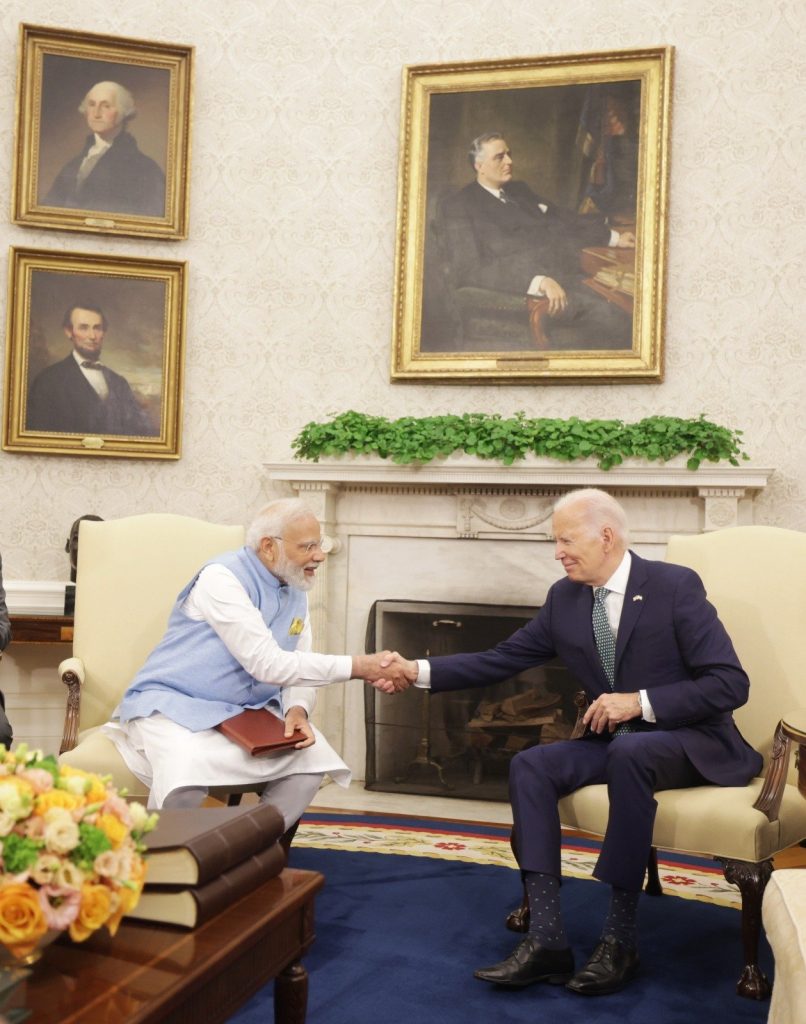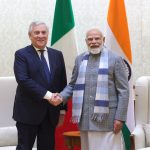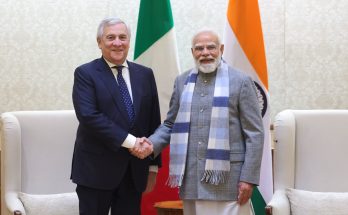
WASHINGTON: The burgeoning India-US strategic partnership scaled new frontiers with the forging of an all-encompassing technology-driven partnership and the launch of the next-generation defence partnership, which included the signing of a landmark deal on the co-production of jet engines.
US President Joe Biden rolled out the White House red carpet for Indian Prime Minister Narendra Modi, speaking eloquently about ushering in a new chapter in the defining partnership of the 21st century.
A colourful and captivating White House South Lawn arrival ceremony was staged before approximately 7,000 Indian-Americans on a rainy morning. The ceremony included marching troops and a 21-gun salute before the two leaders held wide-ranging Oval Office talks. The two leaders unveiled transformational steps such as the pathbreaking jet engine deal and an all-encompassing partnership pivoted around technology and innovation. This was only the third state visit of Biden’s presidency so far.
Addressing a joint press conference, PM Modi said that the talks have added a new chapter in India-US strategic partnership and imparted a new direction and a new energy to bilateral tieEven sky is not the limit for India-US strategic partnership, he said. Encapsulating the essence of the talks between the leaders of India and US, India’s Foreign Secretary Vinay Mohan Kwatara underlined that India and the US are headed for stronger and futuristic partnership that will encompass diverse fields, including technology, defence, space, energy, health, and education.
The big takeaway from Modi’s visit was the landmark signing of an MoU between General Electric and Hindustan Aeronautics Limited for the manufacture of GE F-414 jet engines in India, for the Hindustan Aeronautics Limited Light Combat Aircraft Mk 2. This trailblazing initiative to manufacture F-414 engines in India will enable greater transfer of U.S. jet engine technology than ever before. Official sources said that the US assured India to transfer jet engine technology of up to 60 per cent, followed by another 20 per cent over the next years. What makes the jet engine deal transformational is an agreement between the two leaders to support the advancement of this unprecedented co-production and technology transfer proposal.
The US approved India’s plans to procure General Atomics MQ-9B HALE UAVs. The MQ-9Bs, which will be assembled in India, will enhance the ISR capabilities of India’s armed forces across domains. As part of this plan, General Atomics will also establish a Comprehensive Global MRO facility in India to support of India’s long-term goals to boost indigenous defence capabilities.
Technology featured prominently in discussions between the leaders of India and US and culminated in ambitious initiatives to advance technology cooperation across the spectrum. The new technology partnership will include technology transfer, technology trade, technology services, co-production, and co-development of new technology products. The technology-driven partnership will include joint development and the commercialization of technologies.
President Biden, an ardent votary of stronger India-US partnership, struck an upbeat note on the future trajectory of the India-US partnership.

“I’ve long believed the relationship between the United States and India … will be one of the defining relationships of the 21st century,” Biden said during the welcome ceremony. Positioning values at the heart of the India-US partnership, Biden said: “As democracies, we can better tap into the full talent of all of our people, and attract investments as true and trusted partners. As leading nations, our greatest export is the power of our example,” Biden said from a podium on the South Lawn. “Equity under the law, freedom of expression, religious pluralism, and the diversity of our people. These core principles have endured and evolved even as they have faced challenges throughout each of our nation’s histories and fuel our strength, depth, and future
Emphasizing the increasing importance of the India-US partnership in a changing world, Mr. Biden underlined that the challenges and opportunities facing the world in this century require that India and the United States work and lead together.
“This grand welcome ceremony at the White House today is an honor and a source of pride for the 1.4 billion people of India,” Modi said, speaking in Hindi. “This is also an honor for more than 4 million people of Indian origin living in the U.S. For this honor, I express my heartfelt gratitude.”
PM Modi’s maiden state visit to the US was not only high on form, but also resulted in substantive outcomes that will make the India-US relations the defining partnership of the 21st century. President Biden raised the bar for the India-US partnership by pulling out all stops s to welcome PM Modi and getting approvals to forge the technology-driven partnership and the next phase in the India-US defence partnership that will revolve around co-production and co-development.
(Manish Chand is CEO of the Centre for Global Insights India, a think tank focused on global affairs, and the India Writes Network. He is Editor-in-Chief of India and the World, a journal on international affairs.)

Author Profile

- Manish Chand is Founder and Editor-in-Chief of India Writes Network (www.indiawrites.org) and India and World, a pioneering magazine focused on international affairs. He is CEO, Centre for Global India Insights, an India-based think tank focused on global affairs.
Latest entries
 India and the WorldDecember 12, 2025India-Italy bonding: Tajani’s visit raises the bar for business, maritime ties
India and the WorldDecember 12, 2025India-Italy bonding: Tajani’s visit raises the bar for business, maritime ties In ConversationNovember 26, 2025G20 is a Force for global Good
In ConversationNovember 26, 2025G20 is a Force for global Good articlesNovember 26, 2025Rescuing G20 from North-South divide: Ubuntu Moment
articlesNovember 26, 2025Rescuing G20 from North-South divide: Ubuntu Moment India and the WorldOctober 27, 2025Modi hails the century of India and ASEAN, backs ASEAN centrality
India and the WorldOctober 27, 2025Modi hails the century of India and ASEAN, backs ASEAN centrality







